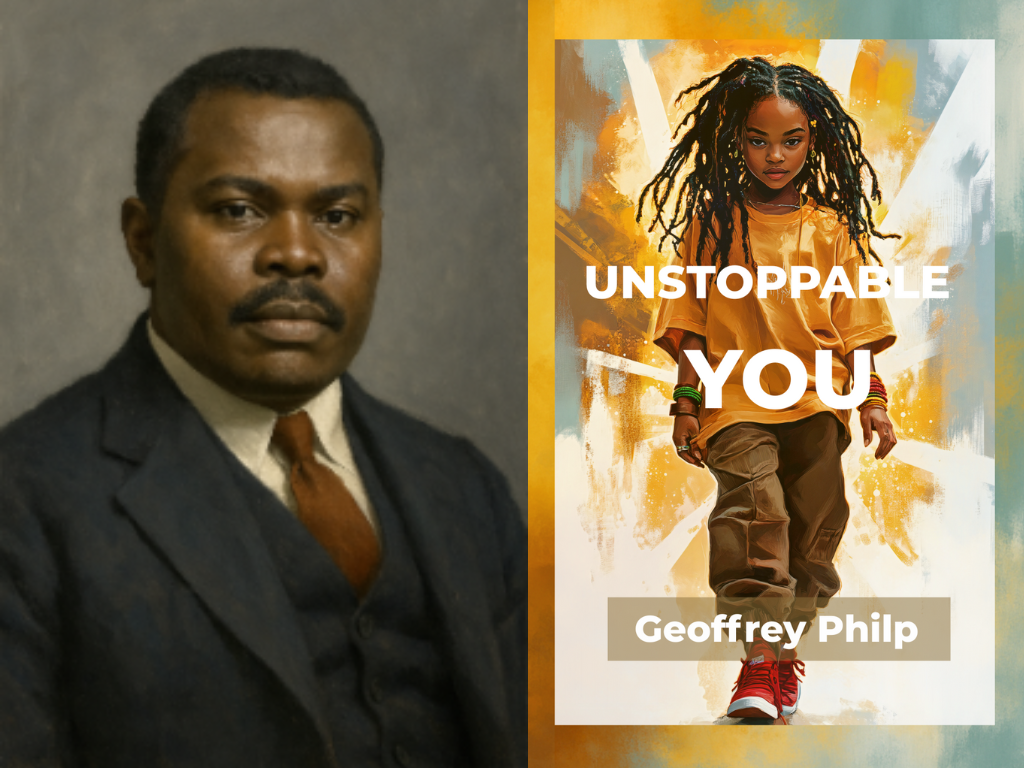Marcus Garvey taught, “Man know thyself.” The Power of the Mind, Purpose, and Perseverance begins there. It is a course grounded in the conviction that liberation starts with clarity of thought, disciplined purpose, and unwavering perseverance. Designed through The Garvey Classroom and guided by the Marcus Garvey Education Academy, the program transforms Garvey’s philosophy into a structured learning path that connects self-knowledge to collective freedom.
Garvey believed that education must build both character and capacity. “If you have no confidence in self, you are twice defeated in the race of life,” he declared in The Philosophy and Opinions of Marcus Garvey (1923). This principle anchors the course, which integrates intellectual rigor with cultural restoration.
Foundations and Framework
The course stands on two pillars of African thought: Ma’at and Ubuntu.
From ancient Kemet, Ma’at names the principles that hold the universe together—truth, balance, reciprocity, justice, and harmony. These form the Ma’at Ledger, the moral architecture of the classroom:
– Truthfulness — support every claim with credible evidence.
– Usefulness — design learning that helps others think or act.
– Beauty — write and speak with clarity and coherence.
– Sustainability — create work that endures for self and community.
Ubuntu complements Ma’at by affirming that identity is relational: I am because we are. Where Ma’at orders the world, Ubuntu binds it through compassion and mutual care. Together they express Garvey’s view that the progress of the individual must serve the uplift of the race and, by extension, humanity.
Each principle connects directly to Garvey’s teaching that “education is the medium by which a people are prepared for the creation of their own particular civilization.” Knowledge and responsibility are inseparable; intellect without community is incomplete.
Mind: Clarity as Power
The first module begins with Garvey’s charge, “Man, know thyself.” Through readings such as The Foundation of Self and The Power of Real Education, students explore self-definition as the cornerstone of freedom. Frederick Douglass and Carter G. Woodson stand beside Garvey as guides who understood that knowledge is a form of resistance.
These lessons correct the distortions of traditional schooling. They rebuild confidence through study of Africa’s civilizations, from the Nile Valley to modern Pan-African thought. Learners see that history is not distant memory but living inheritance.
Purpose: Action with Meaning
“Always have a purpose,” Garvey wrote. The second module demonstrates that purpose grows through steady work and service. In Purpose as Power, Garvey’s writings are paired with the discipline of Rosa Parks, whose quiet strength reflected years of preparation, not chance.
Freeing the Mind deepens this by connecting Garvey’s 1937 address in Nova Scotia to the legacy of Bob Marley, who carried his words—“None but ourselves can free the mind”—into the global imagination. The following unit, Purpose in Action, features journalist and organizer Claudia Jones, whose creation of Britain’s first Caribbean Carnival showed that culture itself can be an act of liberation.
Perseverance: Endurance as Leadership
Perseverance, Garvey said, is the will to act “with hope of a greater life.” In Strength That Endures, students study Paul Robeson, whose artistry and activism embodied Garvey’s belief that leadership requires sacrifice. “Leadership means martyrdom,” Garvey wrote, describing the cost of standing firm when silence would be safer.
The Strength to Continue links this ethic to the work of Thomas Sankara, whose reform in Burkina Faso reflected Garvey’s model of self-reliant governance. Together, these figures reveal that endurance is not passive waiting but daily, decisive courage.
Liberation: Confidence and Collective Destiny
The final module, Confidence as Liberation, builds toward the course’s culmination—African Redemption. Garvey’s declaration that “Princes shall come out of Egypt and Ethiopia shall stretch forth her hands unto God” frames liberation as both prophecy and duty.
Students end the program by designing community-based projects rooted in the Garveyite triad: One God, One Aim, One Destiny. Their capstone essays become blueprints for practical service—linking study to rebuilding.
Academic and Cultural Integrity
The teaching philosophy combines Garvey’s clarity with the Africana frameworks of Linda James Myers and Greg Carr, and the liberatory approaches of Frantz Fanon, bell hooks, Paulo Freire, and Howard Zinn. Each influence reinforces the same outcome: students who think critically, act purposefully, and persevere with moral courage.
Assignments, reflections, and essays are evaluated through the Ma’at Ledger Rubric. Ubuntu shapes peer collaboration—students are responsible for one another’s growth. Learning is both intellectual and ethical: knowledge must serve justice and community.
Endorsements from Garvey Scholars
“The Power of the Mind, Purpose, and Perseverance is a course that faithfully carries forward my father’s vision.”
— Julius W. Garvey, M.D., O.J. Founder and Chairman, Marcus Garvey Institute for Human Development
“I endorse this initiative by Geoffrey Philp because the teaching of the philosophy of Marcus Garvey, which guided the movement for decolonization and civil rights, is imperative for our economic, social, and cultural goals in the 21st century.”
— Rupert Lewis, Professor Emeritus of Political Thought, University of the West Indies, Mona
The Broader Mission
Garvey warned that “a race without authority and power is a race without respect.” This course answers that challenge through education that rebuilds authority from within. Students examine how confidence, purpose, and endurance form a single process of self-determination.
Each participant leaves with a deeper understanding that freedom is both inner and collective. Ma’at gives them order; Ubuntu gives them belonging. Knowledge becomes not a possession but a shared responsibility—to think, to act, and to build institutions that uplift the race and serve humanity.
Continuing the Work
The Power of the Mind, Purpose, and Perseverance stands as the cornerstone of The Garvey Classroom, a digital and in-person learning platform that links scholarship, art, and civic action. It offers educators, parents, and students a model of Pan-African pedagogy for the present age.
In Garvey’s words, “What you do today that is worthwhile inspires others to act at some future time.” Through this course, that inspiration becomes structure—a curriculum of clarity, purpose, perseverance, and communal grace grounded in Ma’at and Ubuntu.
For more information or partnership inquiries:
Visit thegarveyclassroom.com or contact info@thegarveyclassroom.com.



